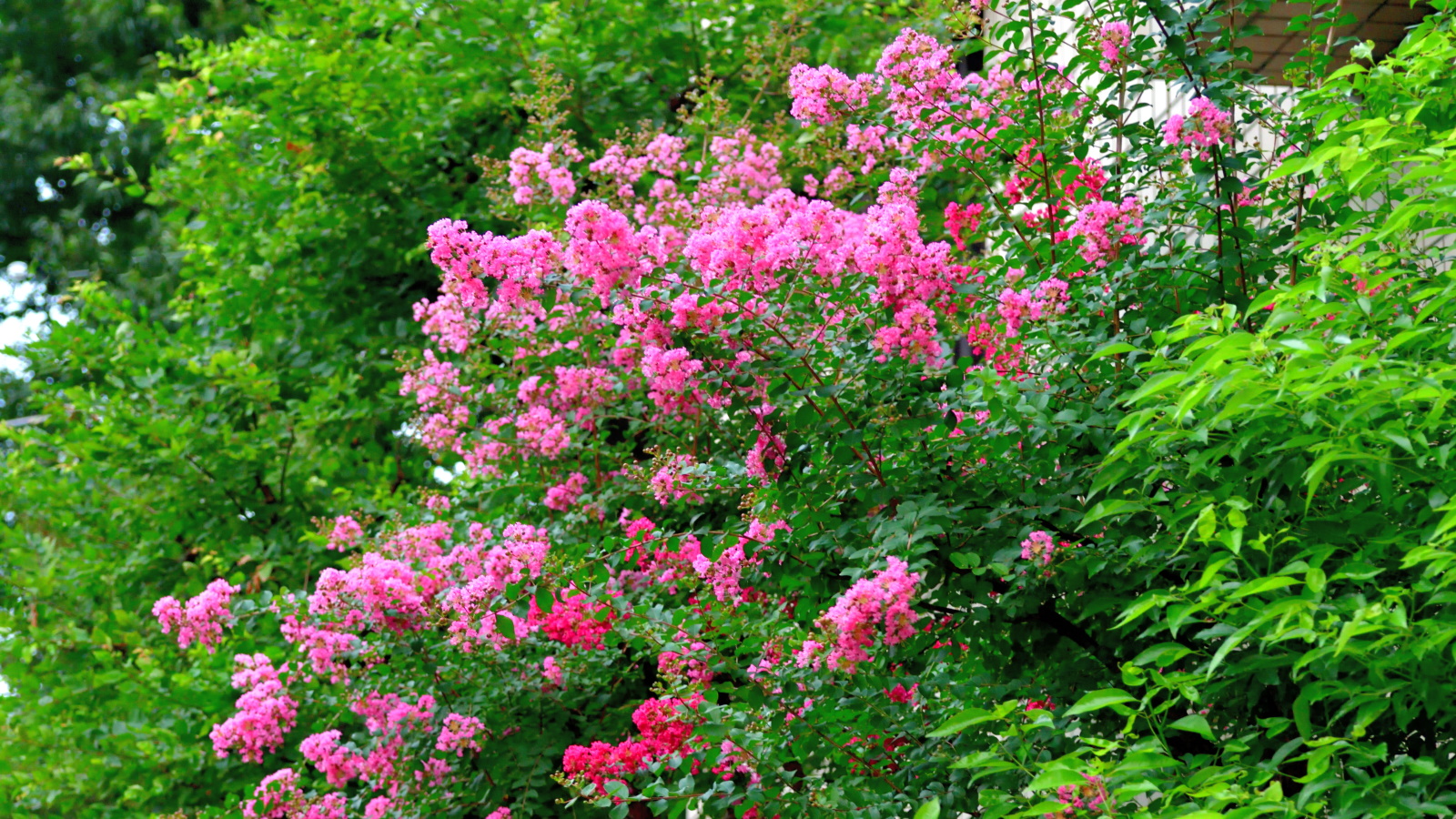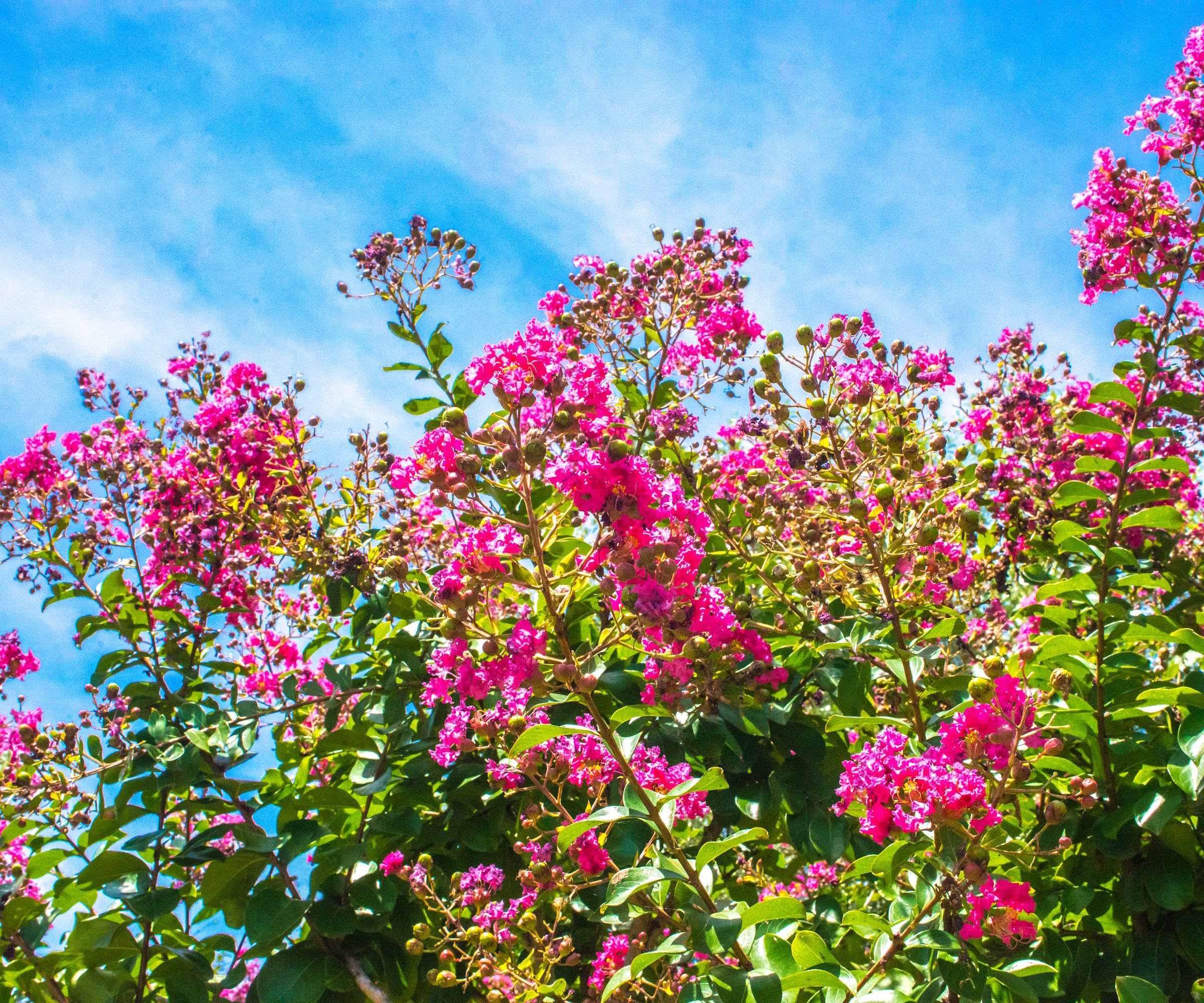How to propagate crepe myrtle – advice from a professional gardener for successful cuttings this summer
Learning how to propagate crepe myrtle is a cost-effective way to grow your ornamental shrub collection


Lagerstroemia, commonly referred to as crepe myrtle, are ornamental shrubs or small trees that fill backyards and borders with bright and brilliant blooms. With an impressive floral display, these long-flowering plants can be found in royal purple to pure white, and many other colors in between.
When considering how to care for and grow crepe myrtle, these plants are sunseekers, thriving in sunny spots and warmer, southerly regions. In smaller yards, crepe myrtle plants can also be grown in pots, although I would suggest seeking out a dwarf variety that is more suited to container growing. In general, crepe myrtle shrubs are considered low-maintenance plants, thriving with little attention and without fertilizing.
You might already have a thriving crepe myrtle shrub at home, but have you considered growing your collection or making new plants by taking cuttings? As a professional gardener, I have propagated many plants by taking softwood and hardwood cuttings, and by following a few simple steps, you too can successfully learn how to propagate crepe myrtle plants this year.

How to propagate crepe myrtle plants
Crepe myrtle plants produce panicles of colorful flowers in late spring and summer. The texture of the petals is what gives this shrub its name, with a crepe-paper-like texture that can look tissue-like as the flowers fade. These flowering shrubs thrive in sunny spots in the yard, and fortunately for us gardeners, they can be propagated by taking cuttings during summer.
When to take crepe myrtle cuttings

'Crepe myrtle shrubs are great plants for full-sun yards in southern climates,' says Whitney Laritson, merchandising & content manager at Nature Hills. 'With their bright blooms and range of colors, these shrubs are the perfect plant for spring and summer.'
Crepe myrtles grow well in US hardiness zone 6 to US hardiness zone 9, although 'there are varieties available that will suit cooler, northern regions,' Whitney adds.
If you are keen to learn how to propagate crepe myrtle, the best time to take cuttings is during the summer, when your shrub produces plenty of new growth. While there is no exact time to do this, generally it is a good idea to take crepe myrtle cuttings in May, June or July.
Design expertise in your inbox – from inspiring decorating ideas and beautiful celebrity homes to practical gardening advice and shopping round-ups.
Crepe myrtle plants are available to buy from Nature Hills.

Whitney Laritson is a garden expert and the Merchandising & Content Manager at Nature Hills. For the last 20 years, Nature Hills has been passionate about providing high-quality plants you can count on.
How to take crepe myrtle cuttings

- In late spring or early summer, pick a dry, mild day to take your cuttings. Using clean, sharp tools, such as these pruning shears from Walmart, cut 3 to 4 stems from new growth. Your cuttings should be 6 to 8 inches in length, and it is best to cut at the point where the stem meets the main branch.
- Remove any foliage other than 2 or 3 leaves at the top of each cutting. This should mean that your cutting has 2 or more stripped leaf nodes lower down the stem.
- Dip the bottom of each cutting into a small cup of water, no more than 1 inch deep, before dipping in rooting hormone powder, available from Walmart. Using rooting hormone powder is not always necessary but can help to encourage roots to develop. I have taken many cuttings that have rooted without using this powder, so the choice is up to you.
- Once your crepe myrtle cuttings are ready, prepare a small pot where they are to grow. Select a pot no wider than 4 inches in diameter and fill it with potting soil combined with grit, to ensure that drainage is adequate.
- Using a pencil or thin tool, carefully create small holes for your cuttings in the container. Position your 4 cuttings in the pot, making sure they are not touching, and leaving only 2 or 3 inches of each cutting above the soil.
- Place your crepe myrtle cuttings in a shaded, sheltered spot, such as in a cold frame, watering as necessary to prevent them from drying out. During the summer, remember to check on your cuttings every day, to ensure that the soil does that completely dry out.
- In 4 to 6 weeks, roots will begin to develop. Gently wiggle your cuttings after 6 weeks - if there is resistance, you will know that roots have developed. You can then replant the cuttings into small pots or directly into your borders.
FAQs
Can I grow crepe myrtle from seed?
Crepe myrtle plants produce seed after flowering. If you want to save seed, do not deadhead your shrubs, leave the faded flowers on the plant and wait for seed pods to develop. Once they turn brown you can collect and store seed, ready to be sown under glass the following spring.
Learning how to propagate crepe myrtle plants is a good way to grow your shrub collection while also learning a new skill. For more information, see our guide on when to prune crepe myrtle, or for advice on ornamental shrubs to grow in sun-drenched yards - like crepe myrtles - see our guide on the best flowering shrubs for full sun.

Thomas is a Content Editor within the Gardens Team at Homes and Gardens. He has worked as a professional gardener for both public spaces and private estates, specializing in productive gardening, growing food and flowers. Trained in Horticulture at the Garden Museum, he has written on gardening and garden history for various publications, including The English Garden, Gardens Illustrated, Hortus, The London Gardener and Bloom. He has co-authored a Lonely Planet travel book, The Tree Atlas, due out in 2024.

